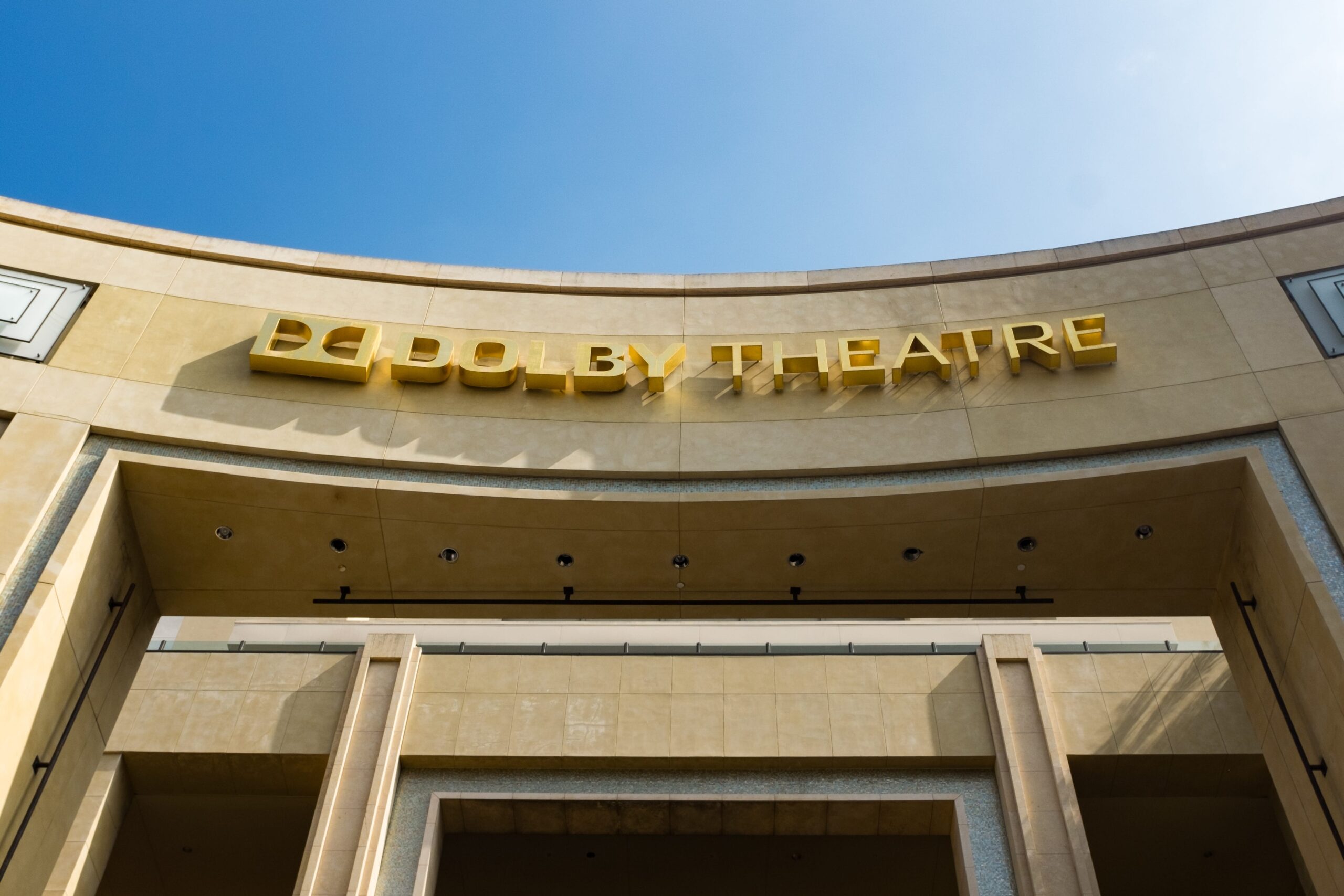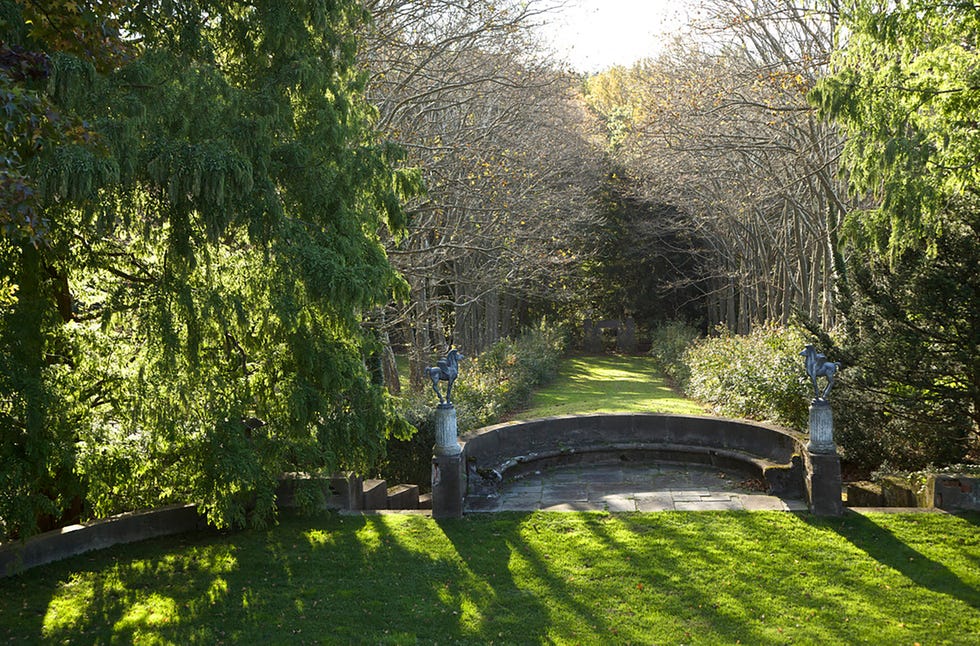For the Oscars, no ordinary theatre will do. As the stars prepare to strut down the red carpet this Sunday for the 97th Academy Awards, they’ll be entering a venue that, unlike any before it, was purpose-built for cinema’s most prestigious night: The Dolby Theatre.
Before the Dolby (originally the Kodak) Theatre opened its doors in 2001, the Academy Awards played musical chairs. From the Hollywood Roosevelt Hotel that hosted the first 15-minute ceremony in 1929 (tickets only cost $5!) to the grand Shrine Auditorium, the Oscars never quite found its perfect home. The Dorothy Chandler Pavilion was too small, especially its stage, while the Shrine wasn’t built to handle the increasingly complex technical demands of a global television production. That is, until, the Dolby Theatre came along.
The Theatre Cost $94 Million to Build
In August of 1997, Canadian development firm TrizecHahn approached the Academy with plans for an entertainment complex at the iconic intersection of Hollywood Boulevard and Highland Avenue. The Academy saw an opportunity and signed on as partner and advisor. With $94 million dedicated to the theatre itself (within a larger $615 million complex), construction began on what would become Hollywood’s architectural love letter to cinema.
Every Inch Was Designed for Television
Architect David Rockwell, who had previously designed Oscar ceremonies, understood the dual needs of creating both a spectacular in-person experience and a flawless television production. «The entire facility, from Hollywood Boulevard to the stage, is predesigned to work as a TV production facility,» Rockwell explained of his creation. The venue includes 14 fixed camera positions and a «media cockpit» on a hydraulic lift in the orchestra seating that can be converted to regular seating when not needed. A grid extends 15 feet in front of the stage, allowing for flexible technical installations, while substantial electrical power is available throughout all areas. Even the cabling—the nervous system of any broadcast—runs through hidden but accessible channels in the floors and walls.
No Nominee is More Than Four Seats From an Aisle
The theatre’s 3,400 seats are arranged so that every nominee sits no more than four seats from an aisle—ensuring those emotional dashes to the stage don’t involve awkward climbs over fellow attendees. It features deep plum upholstery and cherry wood finishes that give the space warmth, designed to create intimacy between the audience and performers while drawing attention to the action on stage.
The Theatre Has Space for Best Picture Winners Through 2071
For both attendees and nominees, the Dolby experience begins on Hollywood Boulevard with a towering portal serving as the grand entrance. The two-story Awards Walk features backlit glass plaques for each Best Picture winner on limestone columns, with blank spaces reserved for future winners through 2071. (Optimistic planning, indeed!)
The Lobby Was Inspired by Michaelangelo and Busby Berkeley
The five-level lobby, inspired by Michelangelo’s Campodiglio in Rome and the choreography of Busby Berkeley, centers around a breathtaking spiral staircase with cherrywood balustrades topped by an oval, uplit silvery dome. Twenty-six spectacular images of Oscar winners—from Grace Kelly to Jack Nicholson—adorn the walls as photographic transparencies hung before shimmering «silver screen» panels.
The Stage is One of America’s Largest
Inside the auditorium, a silver-leafed «tiara» crowns the space, with reflective ribs extending down between box seats. The stage itself is among the largest in the nation at 120 feet wide and 75 feet deep, framed by a 64-foot wide proscenium that can be adjusted down to 43 feet.
Kodak Paid $75 Million for Naming Rights—Then Went Bankrupt
When the theatre opened on November 9, 2001, it bore the name «Kodak Theatre» after the film company that paid $75 million for naming rights. The first Academy Awards ceremony held there was the 74th edition on March 24, 2002. In January of 2012, Kodak filed for Chapter 11 bankruptcy and ended its naming rights agreement. By May 2012, Dolby Laboratories had signed a 20-year deal to rename the venue, bringing its cutting-edge sound and vision technology to the space.
The Sound System Features 215 Individual Speakers
Today, the Dolby Theatre features one of the world’s most sophisticated sound systems, featuring Dolby Atmos technology with 215 individually powered loudspeakers. The projection system uses Dolby Vision technology, delivering a million-to-one contrast ratio and twice the brightness of standard screens.
It’s Home to Other Events, Too
While the Academy Awards may be its most famous tenant, the Dolby Theatre has hosted an array of events and performances—Cirque du Soleil’s «IRIS» required $40 million in modifications including stage lifts, while artists from Prince to Celine Dion have graced its stage. Television productions like American Idol finals and America’s Got Talent have made the Dolby their home, as have prestigious events like the AFI Lifetime Achievement Awards.
The Oscars Has Moved Only Once Since 2002
The Dolby Theatre has hosted every Academy Awards ceremony since 2002, with only one exception—the 2021 ceremony during the COVID-19 pandemic, which was moved to Los Angeles Union Station for a downsized event. Talk about a supporting role with staying power!

Julia Cancilla is the engagement editor (and resident witch) at ELLE Decor, where she manages the brand’s social media presence and covers trends, lifestyle, and culture in the design world. Julia built her background at Inked magazine, where she grew their social media audiences by two million, conducted interviews with A-list celebrities, and penned feature articles focusing on pop culture, art and lifestyle. Over her five years of digital media experience, Julia has written about numerous topics, from fashion to astrology.








